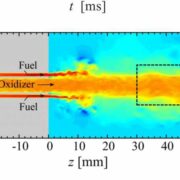Neural Network Of Human Brain Has Similarities to Millennium Simulation Of Cosmic Web

In a research paper published this week in the journal Frontiers of Physics, researchers from Italy investigated the similarities between the network of neurons in the human brain cells and the cosmic network of galaxies astonishingly .
The human brain may be a complex temporally and spatially multiscale structure during which cellular, molecular and neuronal phenomena coexist. It is often modeled as a hierarchical network, during which neurons cluster into circuits, columns, and different interconnected functional areas which pointing toward Neural network and cosmic web similarities.
The structure of the neuronal network allows the linking between different areas, all dedicated to process specific spatiotemporal activities over their neurons, forming the physical and biological basis of cognition.
The Universe, consistent with the massive collection of telescope data gathered over many decades, seems to be reasonably well described by a physical model called the Lambda Cold substance model, which accounts for gravity from ordinary and substance , for the expanding space-time described by general theory of relativity , and for the anti-gravitational energy associated to the empty space, called the dark energy.
Such model presently gives the simplest picture of how cosmic structures have emerged from the expanding background and have formed the cosmic web. The most important building blocks of the cosmic web are self-gravitating substance dominated halos, during which ordinary matter has collapsed to make galaxies.
The initial distribution of matter density fluctuations was early amplified by the action of gravity, and has developed into larger groups or clusters of galaxies, filaments, matter sheets, and voids, during a large-scale web altogether directions in space. Although the relevant physical interactions within the above two systems are completely different, their observation through microscopic and telescopic techniques have captured a tantalizing similar morphology, to the purpose that it’s often been noted that the cosmic web and therefore the web of neurons look alike.
“We calculated the spectral density of both systems,” said co-author Dr. Franco Vazza, an astrophysicist at the University of Bologna.
“This may be a technique often employed in cosmology for studying the spatial distribution of galaxies.”
“Our analysis showed that the distribution of the fluctuation within the cerebellum neuronal network on a scale from 1 micrometer to 0.1 mm follows an equivalent progression of the distribution of matter within the cosmic web but, of course, on a bigger scale that goes from 5 million to 500 million light-years.”
Dr. Vazza and his colleague, University of Verona neurosurgeon Alberto Feletti, also calculated some parameters characterizing both the neuronal network and therefore the refore the cosmic web: the typical number of connections in each node and the tendency of clustering several connections in relevant central nodes within the network.
“Once again, structural parameters have identified unexpected agreement levels,” Dr. Feletti said.
“Probably, the connectivity within the 2 networks evolves following similar physical principles, despite the striking and obvious difference between the physical powers regulating galaxies and neurons.”
“These two complex networks show more similarities than those shared between the cosmic web and a galaxy or a neuronal network and therefore the inside a neuronal body.’
–Science Desk Vicharaks.com

























